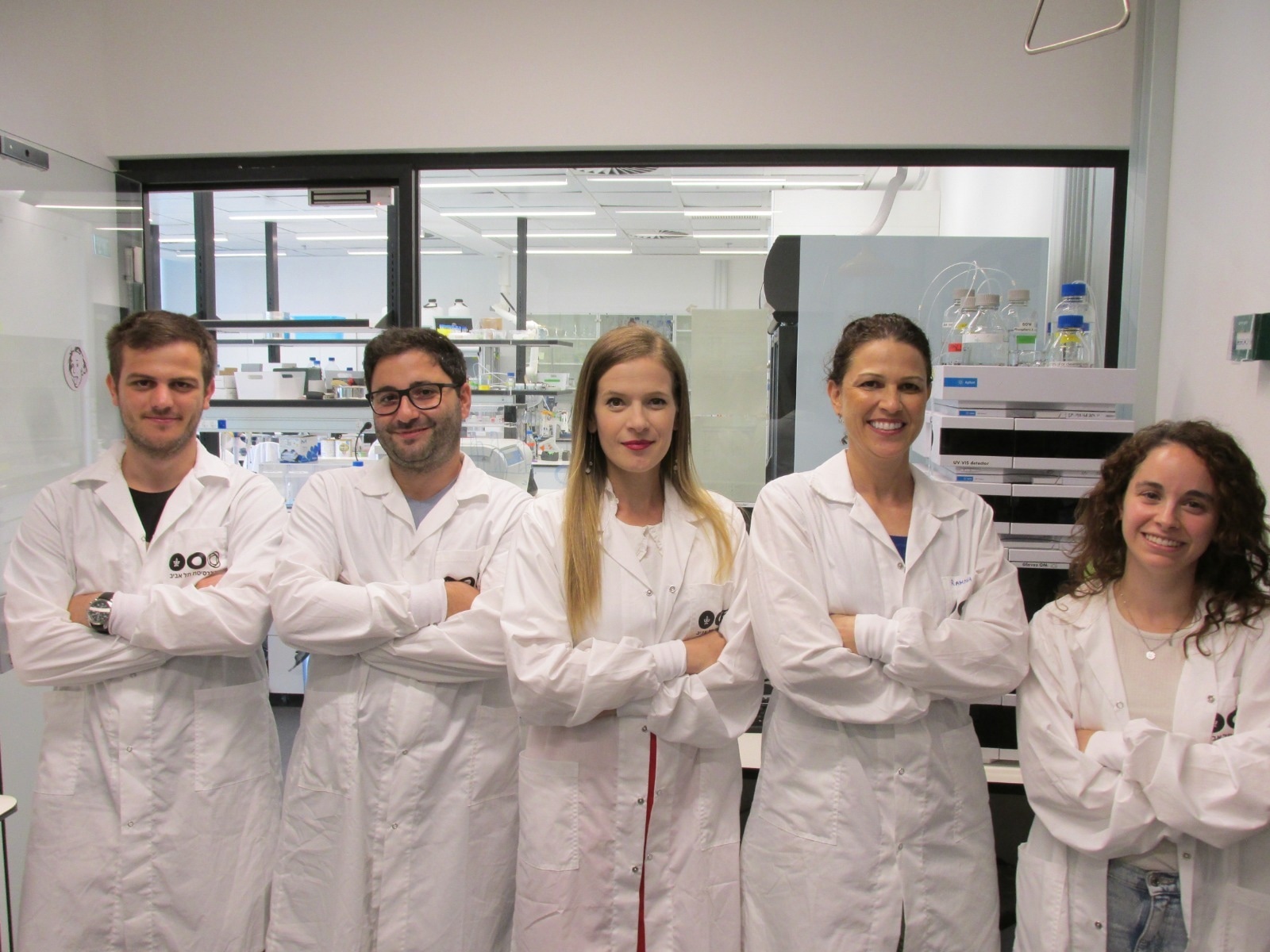Reviewed by Danielle Ellis, B.Sc.Nov 22 2022
A novel approach devised at Tel Aviv University allows for the targeted destruction of malignant tumors using a mix of ultrasound and the injection of nanobubbles into the bloodstream.

Research Team. Image Credit: Tel Aviv University
The research group asserts that this most recent technology permits the eradication of the tumor in a non-invasive manner, in contrast to invasive treatment procedures or the injection of microbubbles into the tumor itself.
The research was led by doctoral student Mike Bismuth from Dr. Tali Ilovitsh’s group at Tel Aviv University’s Department of Biomedical Engineering, in conjunction with Dr. Dov Hershkovitz of the Department of Pathology. Agata Exner, a professor at Case Western Reserve University in Cleveland, also took part in the investigation. The research was published in the Nanoscale journal.
Our new technology makes it possible, in a relatively simple way, to inject nanobubbles into the bloodstream, which then congregate in the area of the cancerous tumor. After that, using a low-frequency ultrasound, we explode the nanobubbles, and thereby the tumor.
Dr Tali Ilovitsh, Department of Biomedical Engineering, Tel Aviv University
According to the experts, the most common technique of cancer treatment nowadays is surgical excision of the tumor in conjunction with complementary treatments like chemotherapy and immunotherapy. A non-invasive substitute for surgery is therapeutic ultrasound to eradicate malignant tumors.
This strategy has both advantages and downsides. On the one hand, it enables localized and targeted treatment; using high-intensity ultrasound to deliver intense acoustic energy to a focal point with high spatial-temporal accuracy can generate thermal or mechanical impacts.

Image Credit: dkidpix/Shutterstock.com
This approach has been used successfully to treat solid tumors deep within the body. Furthermore, it allows for the treatment of individuals who are unable to undergo tumor resection surgery. The heat and high intensity of the ultrasonic waves, on the other hand, may destroy the tissues near the tumor.
Dr. Ilovitsh and her associates attempted to solve this challenge in the current work. Using an animal model, the investigators were able to eradicate the tumor by injecting nanobubbles into the bloodstream (rather than local injection of microbubbles into the tumor itself), in conjunction with low-frequency ultrasonic waves, with little off-target consequences.
The combination of nanobubbles and low frequency ultrasound waves provides a more specific targeting of the area of the tumor, and reduces off-target toxicity. Applying the low frequency to the nanobubbles causes their extreme swelling and explosion, even at low pressures.
Dr Tali Ilovitsh, Department of Biomedical Engineering, Tel Aviv University
Dr. Ilovitsh adds, “This makes it possible to perform the mechanical destruction of the tumors at low-pressure thresholds. Our method has the advantages of ultrasound, in that it is safe, cost-effective, and clinically available, and in addition, the use of nanobubbles facilitates the targeting of tumors because they can be observed with the help of ultrasound imaging.”
Dr. Ilovitsh emphasizes that using low-frequency ultrasound enhances penetration depth, reduces distortion and attenuation, and widens the focal point.
“This can help in the treatment of tumors that are located deep with the body, and in addition facilitate the treatment of larger tumor volumes. The experiment was conducted in a breast cancer tumor mouse model, but it is likely that the treatment will also be effective with other types of tumors, and in the future, also in humans,” states Dr Ilovitsh.
Ramot - Tel Aviv University Tech Transfer Company, applied for several patents to protect this technology and its application. We believe in the commercial potential of this breakthrough technology in cancer treatment, and we are in contact with several leading companies in Israel and abroad to promote it.
Keren Primor Cohen, CEO, Ramot
Journal Reference:
Bismuth, M., et al. (2022) Low frequency nanobubble-enhanced ultrasound mechanotherapy for noninvasive cancer surgery. Nanoscale. doi.org/10.1039/D2NR01367C.